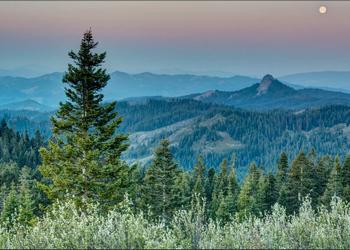
WASHINGTON, DC, September 19, 2017 (ENS) – Interior Secretary Ryan Zinke’s review of national monuments, leaked to the media on Monday, recommends that President Donald Trump make major changes to 10 U.S. national monuments. In the 19-page memo, Zinke recommends more roads, timber harvesting, grazing, mining, drilling and commercial fishing in these protected places.
Trump asked for a review of all monuments designated after 1996 that are 100,000 acres or greater in size or that were made “without adequate public consultation.” Twenty-seven monuments came under review.

The leaked Zinke memo, “Final Report Summarizing Findings of the Review of Designations Under the Antiquities Act,” lays out recommendations on 10 national monuments out of the 27 he was tasked with reviewing. The secretary did not clarify whether or not the other 17 listed monuments will be left alone.
The Trump administration has not yet commented on the recommendations, which Zinke submitted last month but which have been kept secret until they were leaked to the “Wall Street Journal.”
“Zinke says he wants to perpetuate traditional uses, but he’s actually promoting traditional abuses. Logging, mining, grazing, fracking and drilling destroy wildlife habitat and objects of scientific and cultural importance,” said Randi Spivak, public lands program director at the Center for Biological Diversity.
“Zinke and Trump are displaying their disdain for these magnificent public lands and the millions of people who demanded they remain protected,” said Spivak. “Trump has no authority to make any of the changes that Zinke’s recommending. If he tries to, we’ll see him in court.”
The central premise of Zinke’s review is that monuments are supposed to protect “the smallest area compatible with proper care and management,” but he offers no guide for applying this standard. At the same time he suggests the criteria for monument boundaries should be the smallest area possible.
Zinke recommends revising the boundaries of four land-based monuments in three states and two Pacific marine monuments, both created by President George W. Bush.
Zinke would revise the boundaries of:
* – Utah’s Bears Ears National Monument, designated by President Barack Obama
* – Utah’s Grand Staircase-Escalante National Monument designated by President Bill Clinton, which encompasses the largest land area of all U.S. National Monuments
* – Nevada’s Gold Butte national monument designated by President Obama
* – Oregon’s Cascade Siskiyou National Monument
Zinke recommends that these National Monuments have their proclamations modified to prioritize commercial exploitation.
He also recommends reopening four marine monuments to commercial fishing with plans for energy development in those monuments still on the table.
The national association of employees in natural resources agencies Public Employees for Environmental Responsibility, PEER,says Zinke’s review has produced “a mish-mash of recommendations that raise more questions than they answer.”
“What is the purpose of a marine monument if it is open to industrial fishing, drilling, and mining?” asks PEER Executive Director Jeff Ruch, pointing out that the memo was submitted a month ago but the White House refuses to comment because it is both “leaked” and still “under review.”
“This memo is not a coherent basis for serious public land use decisionmaking,” says Ruch.
In addition, the Zinke memo recommends:
• Opening Maine’s Katahdin National Monument to commercial logging, while also citing a statute authorizing timber cutting to conserve “historic objects,” which would not be the case here, says Ruch.
• That Trump request “congressional authority to enable tribal co-management of designated cultural areas” in three monuments without explaining how that would work or who would pay for it
• Creating three new monuments that depend upon first developing “a standard for public input and process for monument designations in the future.”
Chris Saeger, executive director of the Western Values Project, said, “These recommendations put at risk our way of life in the West by threatening access to public lands. This sham review from Secretary Zinke has been unpopular from beginning to end, and it will continue to be met with opposition by the vast majority of Westerners and Americans.”
Presidents have the authority to designate national monuments under the Antiquities Act of 1906, but there is nothing in the Act that gives presidents the right to rescind them, although several presidents have changed monument boundaries.
A poll conducted by Western Values Project found that Secretary Zinke’s already low job approval rating fell seven points in his home state of Montana after the announcement of his national monuments review.
A national poll conducted last month found that only 17 percent of Americans believed the review should have even been conducted, while 75 percent overwhelmingly support continued protections for these monuments.
If Trump tries to follow Zinke’s recommendations, he will be sued.
“It is legal terra incognita whether the Trump administration can implement any of this,” said Ruch of PEER, noting that Zinke’s final recommendation is that the White House “request that Congress clarify the limits of Executive power under the [Antiquities] Act.”
“What is certain,” Ruch said, “is that any move to strip monument protections or shrink their boundaries will be litigated into the next decade.”
Copyright Environment News Service (ENS) 2017. All rights reserved.
© 2017, Environment News Service. All rights reserved. Content may be quoted only with proper attribution and a direct link to the original article. Full reproduction is prohibited.
